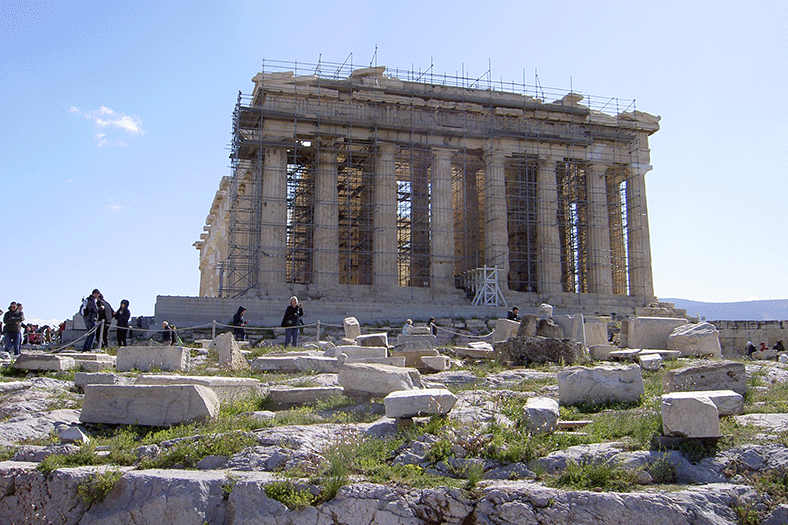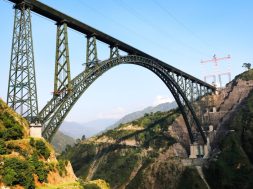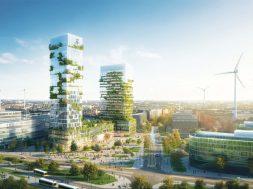Architecture: Addressing the new normal

The course of architecture and design is undergoing a change and the pandemic seems to have acted as a catalyst too. Looking at the past and learning from the present, professionals are seeking solutions for the future which beacons.
Evolution is a process which defines the adaptability of a species to changing times. Having said that the essence of change is not limited to species alone, every aspect of human existence as also the universal existence undergoes change. Since the change is both tangible and intangible it can be seen at times and at times it cannot be. The faculty of architecture falls in the former category.
Right from the time man started living in caves which offered comfort and safe haven, a prehistoric form of architecture was getting synthesised. This development over a period of time transformed into different schools of thought and gave rise to diverse schools of architecture. All of this has led to the evolution of architecture in its present form, a form which is also dictated by the geography, climate, needs and wants. Come to think of it, in a way, architecture along bridges the past with the present and looks to the future. Nirmala Banaji, Proprietress, Banaji & Associates says “Architecture is a connection with the past. It communicates memory, values and a sense of place. From the very first stone-age cave to modern skyscrapers every building has laid its mark on world architecture”.
Architects swear by form and function and will continue to do so for subsequent millennials as well. However with the evolution of the architectural discourse has brought into the picture the different aspects of this accepted reality. Khozema Chitalwala, Principal Architect and Designer, Designers Group says “Architecture is a discourse much beyond form and function alone. Architecture is for the people. It is meant to ease out and yet bring joy to the common man’s life. As an architect, we play with various aspects of a built form, beyond form and function, bringing in an evident change in the lifestyle of the user.”
The role of globalisation, internet and individual choices which were otherwise unfathomable at one point have become evident in redefining the finer aspects of architecture and design. Kanhai Gandhi, Partner, KNS Architects says “The design process has also become much more improved and advanced. Over the last two decades, the Indian architects’ fraternity is constantly participating in the global arena and are leaving a mark in most places around the globe.” The impact of these developments have been deep-rooted. “The concept of functionality itself has undergone change,” says Amin Nayyar, Director, ANA Design Studio, “take work spaces for example, the modern user, is no longer content with a big flat floor filled with desks. If the building is not designed for wellness and human interactions, in a sustainable manner, it is no longer considered ‘functional’“.
Learning from the past
As the evolution continues architects and designers continue to remain in awe of the buildings and structures that were built centuries ago and there is a very valid reason for that. Amin says “I believe heritage buildings offer us two broad lessons. First, their language was crafted by local material availability, and therefore, sustainability. And second, almost all the standing examples used, what at that time, could be terms ‘cutting edge technology’. They didn’t shy away from great height, immense spans or intricate detailing and craftsmanship.” It is also equally important to remember that their historical and cultural significance also counts. Kanhai Gandhi points out “Heritage architecture is a term that refers to buildings or structures of historical or cultural importance, which are a vital part of the country’s heritage and require conservation. Continuity and change have become crucial themes for the built environment and heritage buildings also.”
Addressing the urban challenges
As more and more people start living in the cities the evolution of urban planning, architecture and design become necessary. In a number of cities this still remains a challenge. While addressing these changes it is equally important to address the social issues which are intertwined. Japanese architect Tsuyoshi Tane says “The planning and function of a city should never lose sight of the original objectives which it wanted to attain. Most of the cities are designed to showcase their economic prowess with little or no heed for the social issues and this is quite a concern. Through architecture, we need to think of a sustainable way for a city to deliver basic needs for people and to foster a community building among the residents. It is also good to take a cue from the facts we are aware of and the history we have witnessed so far.” Adding to this argument Amin rightly points out “We will need to seek the answers both from local history, and modern technology. I believe our codes and practices have accepted poor quality too easily and, unfortunately, over specification and over design have been ‘safe answers’ for a long time.” Nevertheless a lot of positive political will is required to do this. One of the easiest examples to cite is the plight of Mumbai and other Indian metros during the monsoon. Even though each year crores of rupees are utilised from the exchequer, the problem seems to persist. The spirit of the Mumbaikar then becomes the focal point keeping all these inadequacies at bay.
Pandemic and Newton’s third law at work
The pandemic has become the external imbalanced force which has forced people as also architects and designers to think differently. If this sanity prevails in the long run, the people too should start participating in initiatives which define or alter the course of architecture and design of their city and surroundings. At some point we have to think beyond it is business as usual. As far as the architects are concerned they can already sense the change which is unearthing at a professional level. Says Khozema “I believe the pandemic has definitely altered the way architecture and interior design is perceived. Although we have been incorporating the SOPs given by the government post lockdown, the changes in design are temporary. Major alteration is manifested in the form of habitual changes. Also, technological advancements and userinteractive designs play a prominent role in refining design sensibilities.”
Kanhai Gandhi accentuates on the change in individual perception which will come into play. “This pandemic has made us realize a lot of things, the need of an individual is one of them. Living together and getting the ‘me time’ was the thing that could get us going through the days. Man is a social animal and living together is what humans want. But along with that, some space for isolation where one can get to do anything one desires has become very essential. A space with the correct acoustics and lighting conditions could be the cave for one.”
The pandemic will give rise to building design alternatives which were just as unfathomable as airplanes and hyperloop. Jamshed Banaji, Director, Banaji & Associates has the last word. He believes flexible housing and open building concept may soon become necessary, elucidating on the same he points out “Flexible Housing and Open Building concept is ‘a housing that can adapt to the changing needs of users’. It includes the possibility of choosing different housing layouts prior to occupation as well as the ability to adjust one’s housing over time. It also includes the potential to incorporate new technologies over time, to adjust to changing demographics.”
Cookie Consent
We use cookies to personalize your experience. By continuing to visit this website you agree to our Terms & Conditions, Privacy Policy and Cookie Policy.









